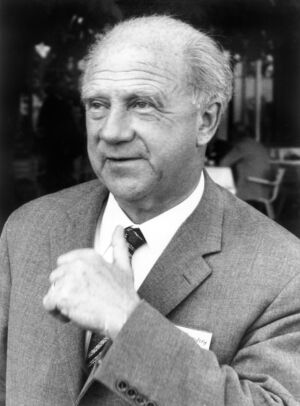String theory began over 50 years ago as a way to understand the strong nuclear force. Since then, it’s grown to become a theory of everything, capable of explaining the nature of every particle, every force, every fundamental constant, and the existence of the Universe itself. But despite decades of work, it has failed to deliver on its promise.
What went wrong, and where do we go from here?
Beginning threads
Like most revolutions, string theory had humble origins. It started in the 1960s as an attempt to understand the workings of the strong nuclear force, which had only recently been discovered. Quantum field theory, which had been used successfully to explain electromagnetism and the weak nuclear force, wasn’t cutting it, so physicists were eager for something new.

But again, like most revolutions, whispers remained through the years, keeping hopes alive. In the 1970s, physicists uncovered several remarkable properties of string theory. One, the theory could support more forces than just the strong nuclear force. The strings in string theory had enormous tension, forcing them to curl up on themselves into the smallest possible volume, something around the Planck scale. Once in place, the strings could support various vibrations, just like a taut guitar string. The different vibrations led to different manifestations of forces: one note for strong nuclear, another for electromagnetism, and so on.
One of the possible vibrations of the string acted like a massless spin-2 particle. This is a very special particle because that would be the quantum force carrier of the gravitational force, the holy grail of a quantized theory of gravity. The theorists at the time couldn’t believe their chalkboards: String theory naturally, elegantly included quantum gravity, and they weren’t even trying!
The second big deal to come out in the 1970s was the introduction of supersymmetry, which claimed that all the particles that carry forces (called bosons, a category that includes photons and gluons) were linked to a supersymmetric partner from the collection of particles that build stuff (called fermions, like electrons and quarks), and vice versa.
This symmetry doesn’t appear in everyday settings; it only manifests at extremely high energies. So if you were to go back in time to the earliest moments of the Big Bang or had enough funding to build a particle collider along the orbit of Jupiter, you wouldn’t just see the normal zoo of particles we’re familiar with; you'd see all their supersymmetric partners, too. These were given suitably stupid names, like selectrons, sneutrinos, squarks, photinos, and my personal (least) favorite, the wino boson.
By making this connection, string theory could build a bridge from the bosons to the fermions, allowing it to leap from just a theory of forces to a theory of every single particle in existence. The introduction of supersymmetry also solved the nasty problem of tachyons by replacing those troublesome particles with supersymmetric partners, which was a nice flourish.
At the end of the 1970s, string theory could potentially explain all the particles and all the interactions among them and provide a quantum solution to gravity.
One theory to rule them all, one theory to find them, one theory to bring them all, and in the stringiness bind them.



3175x175(CURRENT).thumb.jpg.b05acc060982b36f5891ba728e6d953c.jpg)

Recommended Comments
There are no comments to display.
Join the conversation
You can post now and register later. If you have an account, sign in now to post with your account.
Note: Your post will require moderator approval before it will be visible.